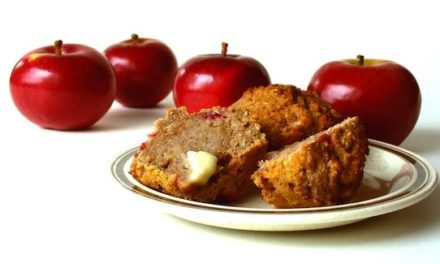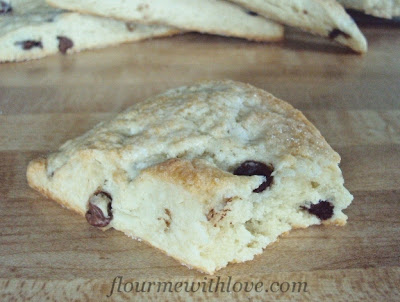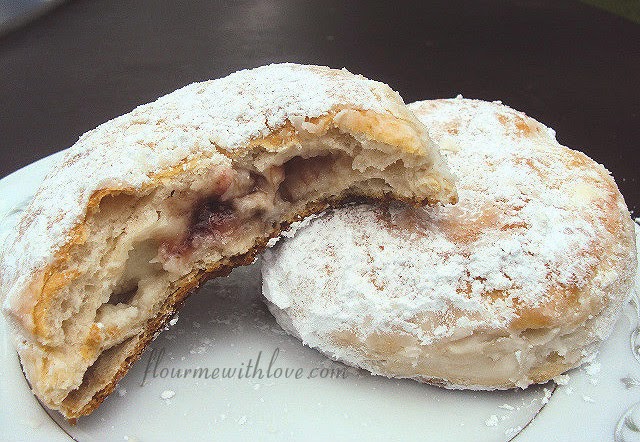Just a little note: some of the links here are affiliates, meaning if you make a purchase, we might earn a small bit to help keep the website going. It doesn’t cost you extra, and we truly appreciate your support!
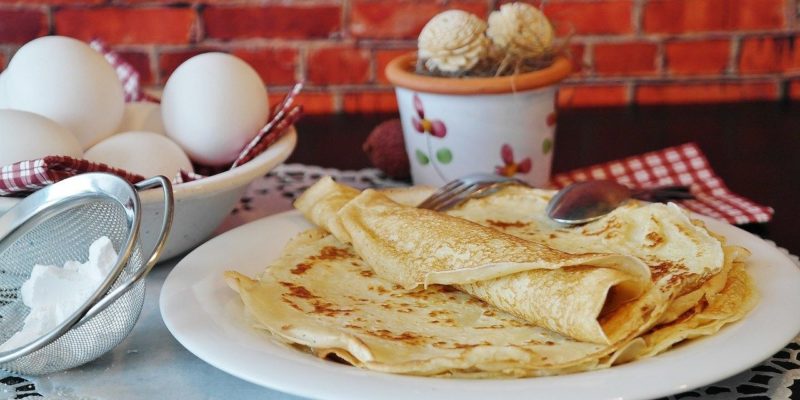
An Easy Recipe Straight From My Kitchen
There are some smells that just instantly transport you back to childhood. For me, the delicate aroma of thin pancakes cooking on the stove takes me right back to my parent’s kitchen. We called them Palatschinke, and they were a constant source of comfort and a guaranteed way to bring smiles to our faces. Even now, after all these years (and trust me, there have been a few!), I still find myself whipping up a batch for my kids, carrying on the tradition. You can use a crepe pan or even a non-stick skillet to whip these babies up!
Now, if you haven’t had the pleasure of eating a Palatschinke yet, picture this: it’s like a super-thin, incredibly light pancake, almost like a crepe. The batter is so simple, just a handful of everyday pantry ingredients whisked together into something magical.
Are you ready to bring this little bit of kitchen magic into your own home?
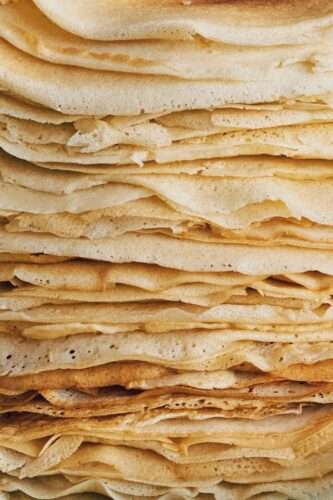
- 1 C flour
- 1 egg
- 1 C milk
- 1 T vanilla
- 1/4 C sugar
- In a bowl, whisk all the ingredients together until combined.
- Spray an 8" skillet with non-stick cooking spray; place over medium heat.
- When the skillet is hot, pour a ladle of batter into the pan and gently tip and twist the pan so the batter covers the entire bottom of the pan.
- When the top of the batter bubbles, turn the palatschinke over and cook for about a minute longer or until it lightly browns.
- Remove from skillet, set aside and continue until the batter is all cooked; add additional cooking spray if needed.
- Serve with syrup or rolled up with a filling.
- Some of our favorite fillings are sweetened cream cheese, berries, fresh whipped cream, flavored cream cheese, nutella, or just drizzled with melted butter.
Palatschinke vs. Crepes: My No-Fuss Friend
You know those fancy crepes everyone talks about? They’re lovely, but they often need a little nap time for the batter to rest. Well, that’s where my beloved Palatschinke shines! This batter is ready to go the second you’ve mixed it. And honestly, that’s a lifesaver when little bellies are rumbling.
The Magic of Keeping It Simple (and Making It Your Own!)
What I love about Palatschinkes is how versatile they are. Sometimes, there’s nothing better than just eating them plain, savoring that soft, slightly eggy goodness – honestly, they’re just that yummy on their own! But they’re also like a little blank canvas, waiting for your favorite flavors to come and play.
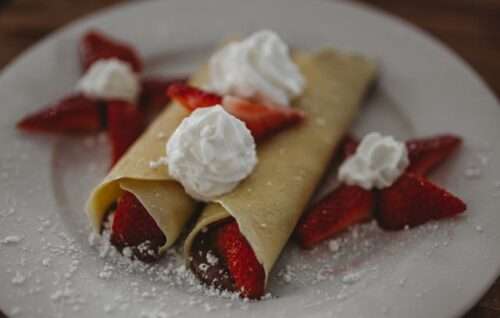
Think of all the yummy things you can do with them:
- Sweet Treats: A sprinkle of powdered sugar is always a classic. Or how about a good drizzle of your go-to syrup – maple, chocolate (always a hit!), or a homemade berry sauce? A little slather of Nutella is pure indulgence, and a spoonful of your favorite jam or fruit compote brings a lovely fruity twist. And if you’re feeling a bit fancy, a dollop of whipped cream makes them extra special.
- Savory Surprises: Now, I mostly stick to the sweet side with my Palatschinke, but don’t rule out savory fillings! A simple cheese spread can be surprisingly delicious, or you could try some lightly sautéed veggies for a quick and easy lunch. You could even use up some leftover cooked chicken or ham for a different kind of tasty treat.
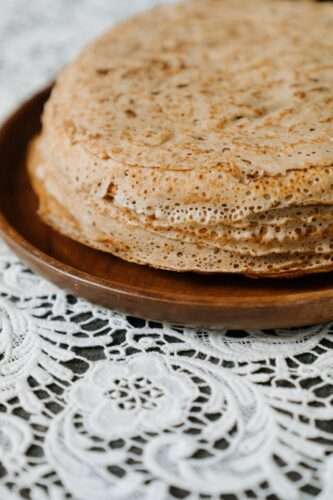
Why This Easy Palatschinke Recipe Feels Like a Warm Hug
This easy Palatschinke recipe has become a real go-to in our family for so many reasons:
- Quick as a Wink Breakfasts: On those busy mornings, when everyone’s rushing, the fact that you don’t need to wait for the batter to rest is a total lifesaver. Warm, happy tummies in minutes!
- Simple Sweetness: For a fuss-free dessert that always hits the spot, these are perfect. Light, delicate, and just begging for a sweet topping.
- Happy Kids (Happy Life!): My kids absolutely love how thin and easy they are to eat, and they get such a kick out of choosing their own fillings. It’s a little bit of fun on a plate!
- A Little Taste of My Heritage: Palatschinke is a dish that’s been passed down through generations in my family, a little taste of where I come from. Sharing it with you feels like sharing a little piece of home.
If you make this recipe, don’t forget to tag me @flourmewithlove

